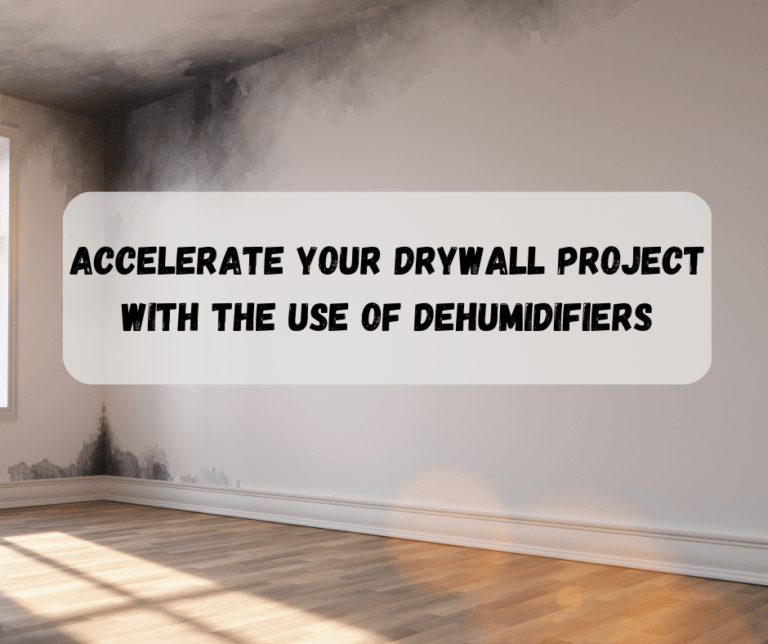How to Install Drywall in a Garage
Installing drywall in your garage can transform your space, turning it from a raw construction zone into a well-organized, usable area. Having tackled several home improvement projects, including drywall installation in my own garage, I can attest to the many benefits of this endeavor. With the right approach, tools, and materials, a DIY drywall job can significantly enhance your garage’s aesthetics and functionality.
In this comprehensive guide, we will walk you through every step of the process, ensuring you get it right and achieve a professional finish. Whether you’re a seasoned DIYer or a novice, you’ll find valuable insights, tips, and resources to facilitate your project.
Understanding Drywall Essentials
Before we jump into the installation process, let’s clarify some key aspects of drywall.
What is Drywall?
Drywall, often referred to as gypsum board, is made up of gypsum plaster sandwiched between two thick sheets of paper. It’s widely used in interior construction due to its affordability, ease of installation, and fire-resistance properties.
Why Drywall in the Garage?
Installing drywall in your garage provides a clean, finished look while also improving insulation and fire safety. It can help manage indoor air quality and give you a designated space for work or storage tasks.
Tools and Materials Required
Here’s a comprehensive list of tools and materials needed for your drywall project:
Tools
- Drywall Sander: Essential for smoothing out the surface. WEN Drywall Sander
- Drywall Screws: Use 1 1/4" or 1 5/8" screws for sturdy attachment.
- Drywall Taping Knife: For smoothing joint compound.
- Utility Knife: For cutting drywall.
- Drywall Lifter: Helpful for holding sheets in place while you secure them. 11′ Drywall Panel Lift
- Measuring Tape and Square: To ensure cuts are accurate.
Materials
- Drywall Sheets: Typically 1/2" or 5/8" thick for garage applications.
- Joint Compound: For finishing seams.
- Taping and Finishing Tape: Such as fiberglass mesh tape.
- Corner Bead: To give corners a sharp finish.
Installation Steps
Now that you’re equipped with the right tools and materials, let’s tackle the installation process.
Step 1: Preparation
Before you begin working, it’s crucial to prep your workspace.
- Clear the Garage: Remove any items or obstacles.
- Inspect the Walls: Ensure that the framing and structure are sound.
- Measure the Area: Take measurements to determine how many drywall sheets you’ll need.
Step 2: Cutting Drywall
- Measure and Mark: Use your utility knife to score and snap the drywall sheets according to your measurements.
- Cut Openings: For outlets or switches, use a jigsaw for precision.
Step 3: Hanging Drywall
- Position Sheets: Lift the drywall sheets into place, starting from the top down. A drywall lifter can be beneficial here.
- Fasten the Sheets: Using drywall screws, secure each panel to the studs. Space the screws 16 inches apart.
Step 4: Taping and Finishing
- Apply Joint Compound: Use a taping knife to apply joint compound over the seams.
- Tape Seams: Press your tape into the compound before applying another layer over it.
- Smooth It Out: Let it dry, then sand the joints with a drywall sander for a smooth finish.
Common Mistakes to Avoid
- Not Securing the Panels Properly: Ensure screws are slightly below the surface to avoid bumps.
- Skipping Drying Times: Allow sufficient drying time for joint compound before sanding.
- Neglecting Safety Gear: Always use a mask and goggles while sanding.
Pro Tips for Success
- Work in Sections: Tackle a few panels at a time to avoid overwhelming yourself.
- Use Quality Materials: Investing in good quality joint compounds and drywall can save time and yield a better finish.
- Get Help: Handling drywall can be cumbersome; enlist a friend or family member for assistance.
Finishing Touches
Painting and Sealing
Once your drywall is installed and sanded, you’ll likely want to paint it. It’s essential to apply a primer first. Use a fire-resistant or moisture-resistant paint if your garage is prone to humidity.
FAQs About Drywall Installation
Q: How long does it take to install drywall in a garage?
A: Depending on the size of your garage, installation can take a weekend or longer if you’re planning to finish and paint it as well.
Q: Do I need to insulate before drywalling?
A: It’s advisable to insulate, especially in climates with extreme temperatures. This can enhance energy efficiency.
Resources for Assistance
For further details and professional tips, consider looking into specialized resources such as The Best Drywall Taping Techniques and How to Repair Drywall Like a Pro.
Conclusion
Installing drywall in your garage is a rewarding DIY project that can greatly enhance your space. By following the steps outlined in this guide and avoiding common mistakes, you’ll be on your way to achieving a polished, functional garage. Feel free to share your experience or questions in the comments below, and let’s foster a community of DIY enthusiasts ready to tackle their own home improvement projects!
Share & Resources
If you found this guide helpful, please share it on Pinterest, Facebook, or Reddit! Your support helps others find useful drywall installation techniques.
Contractors, home improvement bloggers, and DIY forums: Feel free to link back to this article to help your audience with expert drywall installation tips.
Together, let’s empower our communities with the knowledge to improve our homes, one drywall project at a time!

